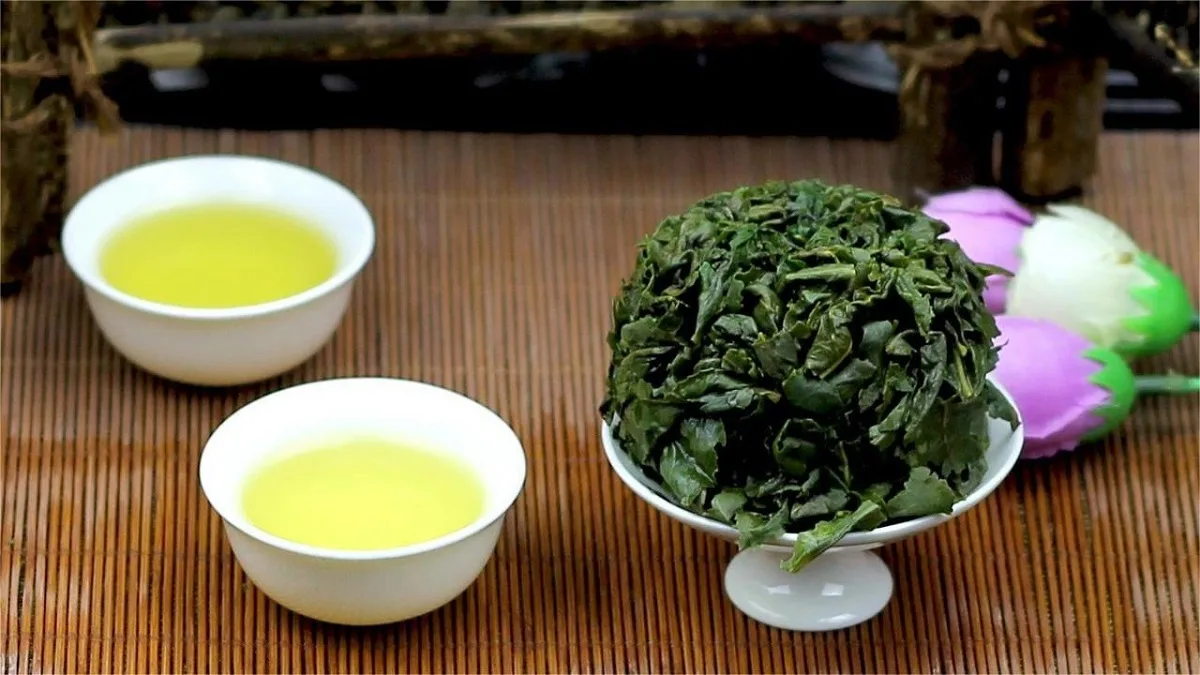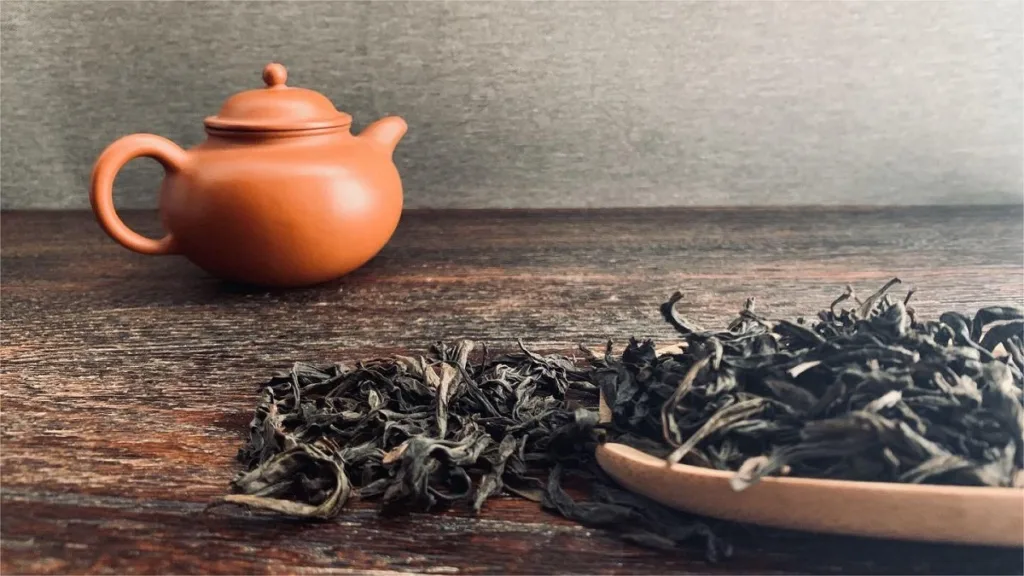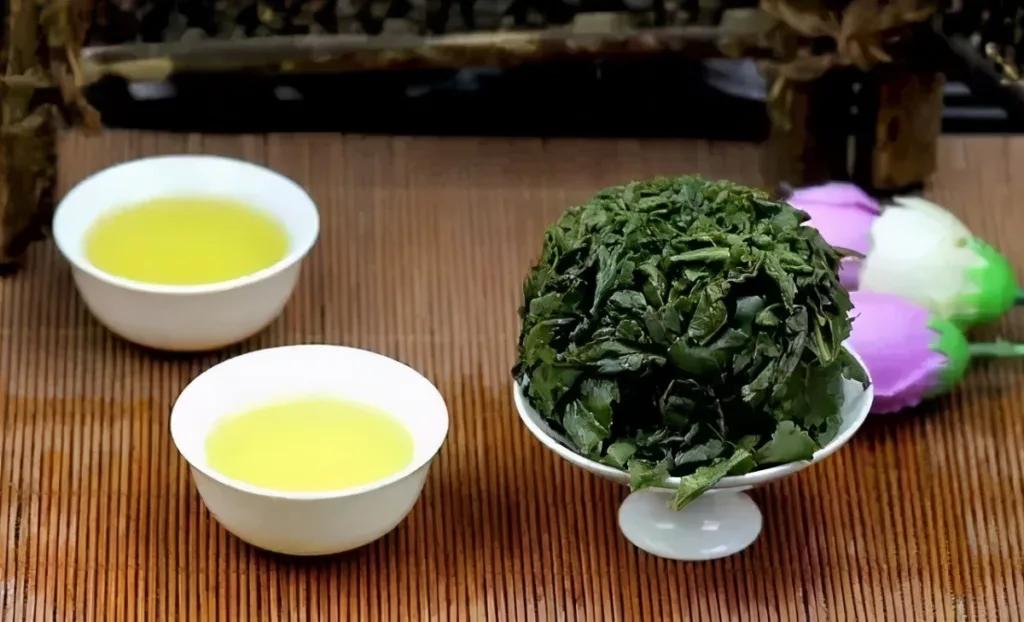Oolong tea, known as 乌龙茶 (Wulong Cha) in Chinese, is a distinctive category of tea that falls under the classification of semi-fermented or partially oxidized tea. With a rich variety of cultivars, Oolong tea stands out as a unique and highly regarded type of tea in China.
The production process of Oolong tea involves several meticulous steps, including picking, withering, shaking, frying, rolling, and baking. These processes contribute to the creation of high-quality tea leaves. The origins of Oolong tea can be traced back to the Song Dynasty, evolving from tribute teas known as Longtuan and Fengbing, with its creation dated around the Yongzheng era (1725) of the Qing Dynasty. Upon tasting, Oolong tea leaves a lingering fragrance on the palate, with a sweet and refreshing aftertaste.
Beyond its flavorful profile, Oolong tea is renowned for its potential health benefits. Notably, it is believed to aid in the breakdown of fats and is associated with weight management and overall well-being. In Japan, it is often referred to as “beauty tea” or “health tea,” emphasizing its potential cosmetic and health-related properties.
Oolong tea is exclusive to China and is primarily produced in the provinces of Fujian, including both northern and southern regions, as well as Guangdong and Taiwan. There is also a limited production in provinces like Sichuan and Hunan. While domestically consumed in Guangdong and Fujian, Oolong tea finds its way to international markets, notably in Japan, Southeast Asia, and the Hong Kong-Macau region. The global popularity of Oolong tea is a testament to its exceptional quality and unique characteristics, making it a sought-after choice for tea enthusiasts worldwide.
Manufacturing Process
The manufacturing process of Oolong tea, or 乌龙茶 (Wulong Cha) in Chinese, is an intricate art involving six major steps: plucking, withering, bruising, oxidation, rolling, and firing. Each step plays a crucial role in shaping the unique qualities and flavors of Oolong tea.
Plucking: Oolong tea follows the principle of “plucking three leaves and a bud,” where the topmost leaves and bud are picked when they reach a certain maturity. Unlike green tea, Oolong requires a specific level of maturity in the leaves, ensuring a consistent size and balance between young and mature leaves, which forms the foundation for its distinctive taste.
Withering: Withering, also known as sun-wilting or air-drying, is the initial step in Oolong tea production. Freshly plucked tea leaves are spread out on clean sieves and left outdoors for sun-wilting. The leaves are monitored until the initial greenness diminishes, and they become slightly wilted without their natural shine. This process involves three steps: air-drying, sun-wilting, and further air-drying.
Bruising: Bruising, or “making the green,” is a pivotal step in creating the characteristic aroma and flavor of Oolong tea. This process involves repeated agitation and withering, a complex and crucial stage that contributes significantly to the final taste and fragrance.
Oxidation (Fermentation): Following bruising, the tea leaves undergo oxidation, which is akin to the “kill-green” stage in green tea production. Oxidation helps control enzyme activity, preventing the leaves from turning completely red, and stabilizes the tea’s quality, impacting its taste and aroma.
Rolling: After oxidation, the leaves are rolled repeatedly to attain the desired shape for Oolong tea—either ball-shaped or elongated strands. Rolling facilitates the release of tea juices and allows them to penetrate the leaf surface, enhancing the richness of the brewed tea. The technique emphasizes speed, appropriate force, and a short duration to achieve the desired outcome.
Firing (Drying): The final stage involves drying, known as firing or baking. Its purpose is to halt enzymatic oxidation, evaporate excess moisture, soften the leaves, and eliminate any potential bitterness. This drying process enhances the sweetness and full-bodied flavor of Oolong tea.
Varieties of Chinese Oolong Tea
Chinese Oolong tea boasts an array of varieties, each distinguished by its origin, processing techniques, and unique flavors. Here’s a breakdown of several prominent varieties:
Da Hong Pao
Hailing from the famous Wuyi Mountain in China, Da Hong Pao is a renowned variety within the Wuyi Rock Tea category. Its name translates to “Big Red Robe” due to the vivid red appearance of the tea trees during early spring, resembling robes. Regarded as a pinnacle among teas, it holds titles such as “Tea King of Wuyi” and “Top Scholar of Tea” in Chinese tea culture.
Tie Guan Yin from Anxi
Tie Guan Yin, originating from Anxi County in Fujian Province, ranks among China’s top ten famous teas. It features twisted, robust, and well-rolled leaves with a sand-green color. Post-brewing, it unveils a golden-hued, amber-like infusion, exuding a natural orchid fragrance. The taste is mellow, rich, and sweet, with a long-lasting aftertaste known as “Yun (charm).”
Dong Ding Oolong
Dong Ding Oolong primarily grows in the Dong Ding Mountain area of Nantou County, Taiwan. Harvestable throughout the year, it is processed from selected Qing Xin Oolong tea leaves. After undergoing a series of steps including sun-wilting, cooling, bruising, and firing, it manifests as tightly rolled dark green tea leaves. Brewed, it reveals a golden-yellow liquor with either a ripe fruity or intense floral aroma, presenting a smooth, sweet taste with a lingering aftertaste.
Feng Huang Shui Xian
Produced in Chao’an Fenghuang Township, Feng Huang Shui Xian comes in three grades: Single Bush, Wave Vegetable (Lang Cai), and Narcissus (Water Lily or Shui Xian). It offers natural floral and honey fragrances, with a robust, mellow, refreshing, and sweet taste that endures multiple brews. Primarily sold in Guangdong and Hong Kong-Macau regions, it is also exported to Japan, Southeast Asia, and the United States.
Tie Luo Han
Tie Luo Han tea trees grow amidst the rocky terrain of Mount Wuyi, imparting a distinct flavor. Harvested in spring, the large, fully opened leaves undergo meticulous processing, resulting in tea with tightly rolled strands in green-brown hues. Upon brewing, it yields a bright orange-yellow infusion, initially mildly astringent, transitioning to a slight bitterness, and culminating in a sweet, lingering taste, accompanied by an aromatic, lingering fragrance.
Wuyi Water Narcissus
Dating back to the Qing Dynasty, Wuyi Water Narcissus is named after its tree variety. Picked as one bud with three leaves, it undergoes a series of processes including sun-wilting, bruising, firing, initial rolling, moderate heating, sieving, cooling, sorting, shaping, and final drying. The dry leaves are plump and oily with a green-brown hue. Post-brewing, it yields a deep orange-yellow liquor, exuding a fragrant orchid aroma, offering a smooth, refreshing taste.
Feng Huang Dan Cong
Originating from the southeastern slope of Fenghuang Mountain in Chaozhou, Feng Huang Dan Cong benefits from ample rainfall, temperature variations, and fertile soil. It’s harvested in two phases: one from January to Qingming Festival, producing teas with a strong honey orchid aroma, and another from Qingming to Guyu, yielding a variety of unique tea fragrances like Cinnamon and Golden Osmanthus.



